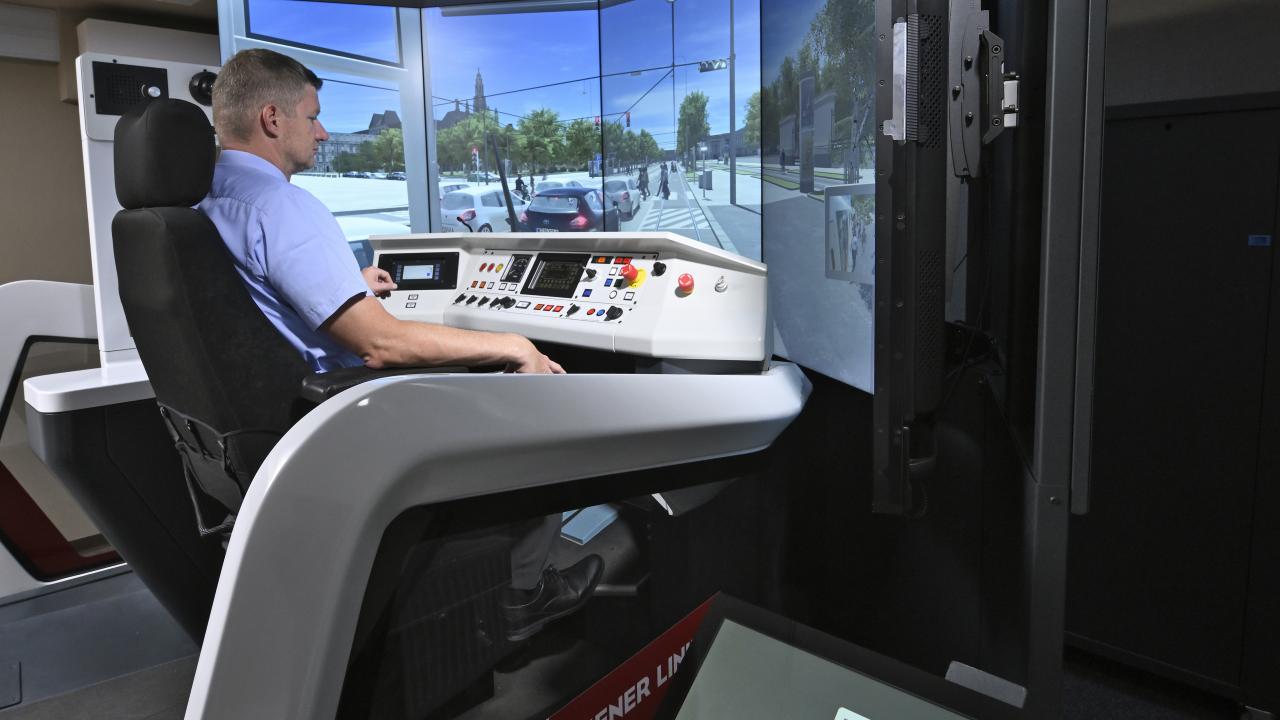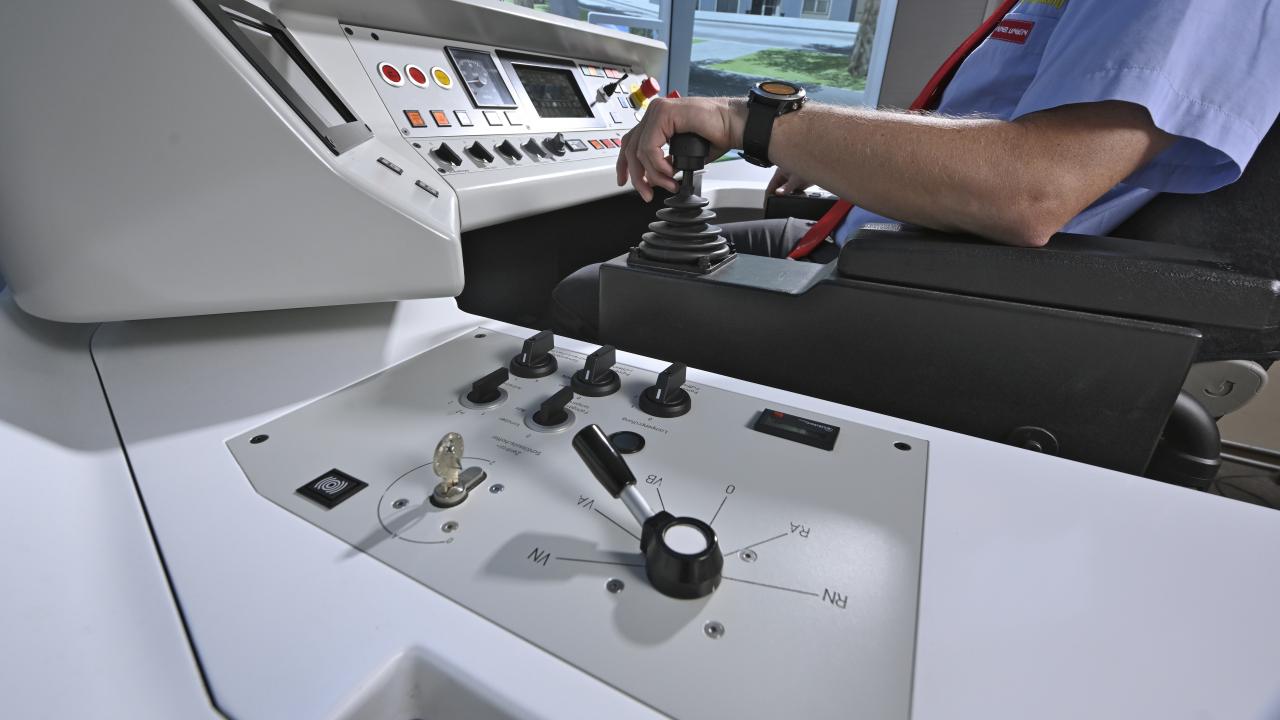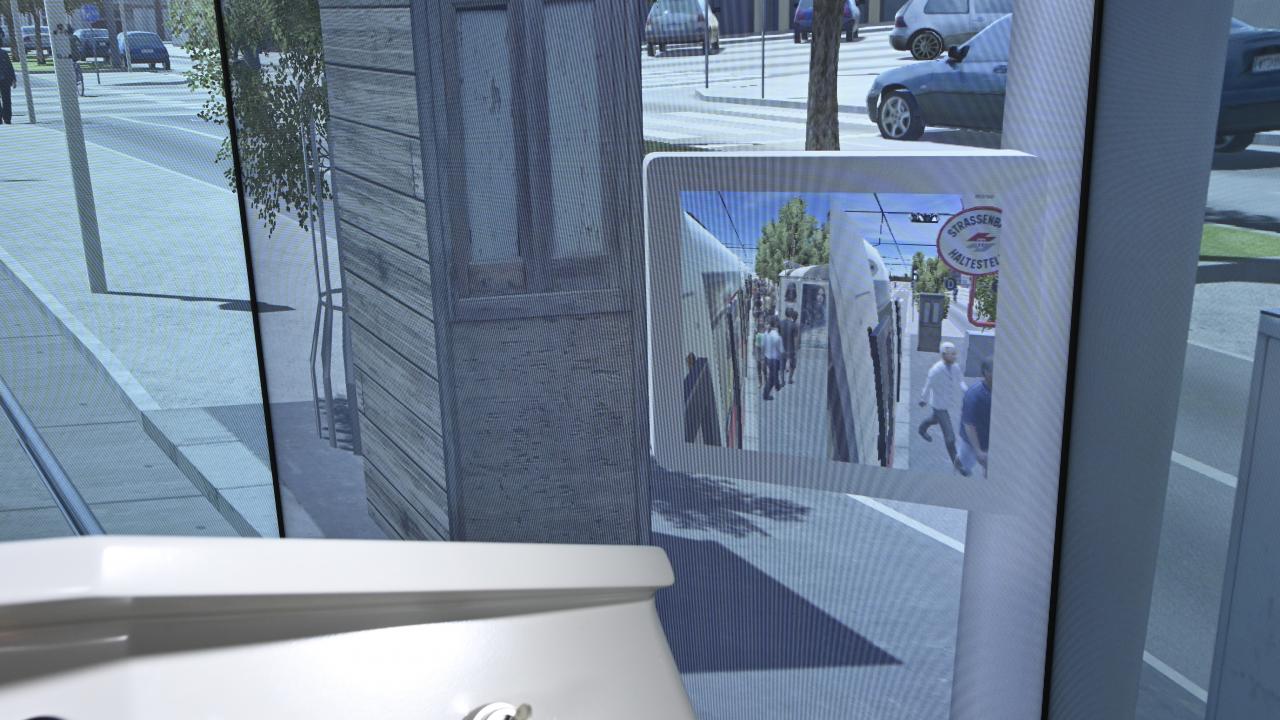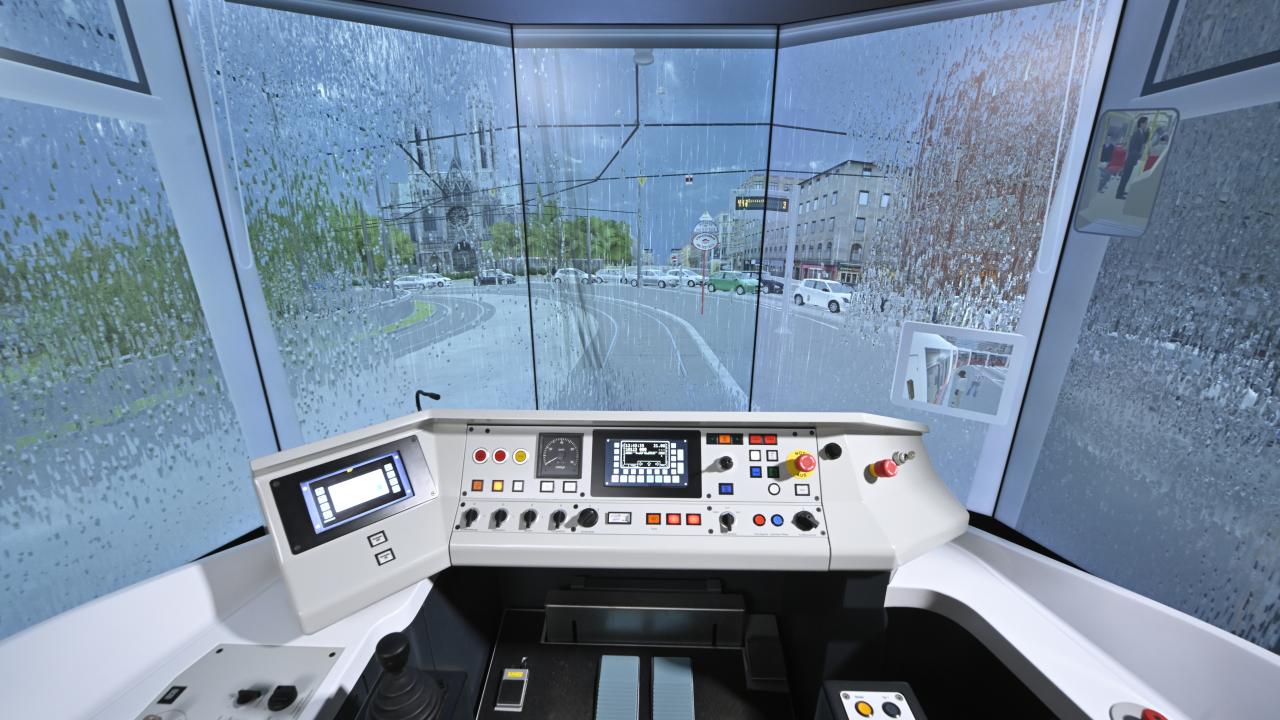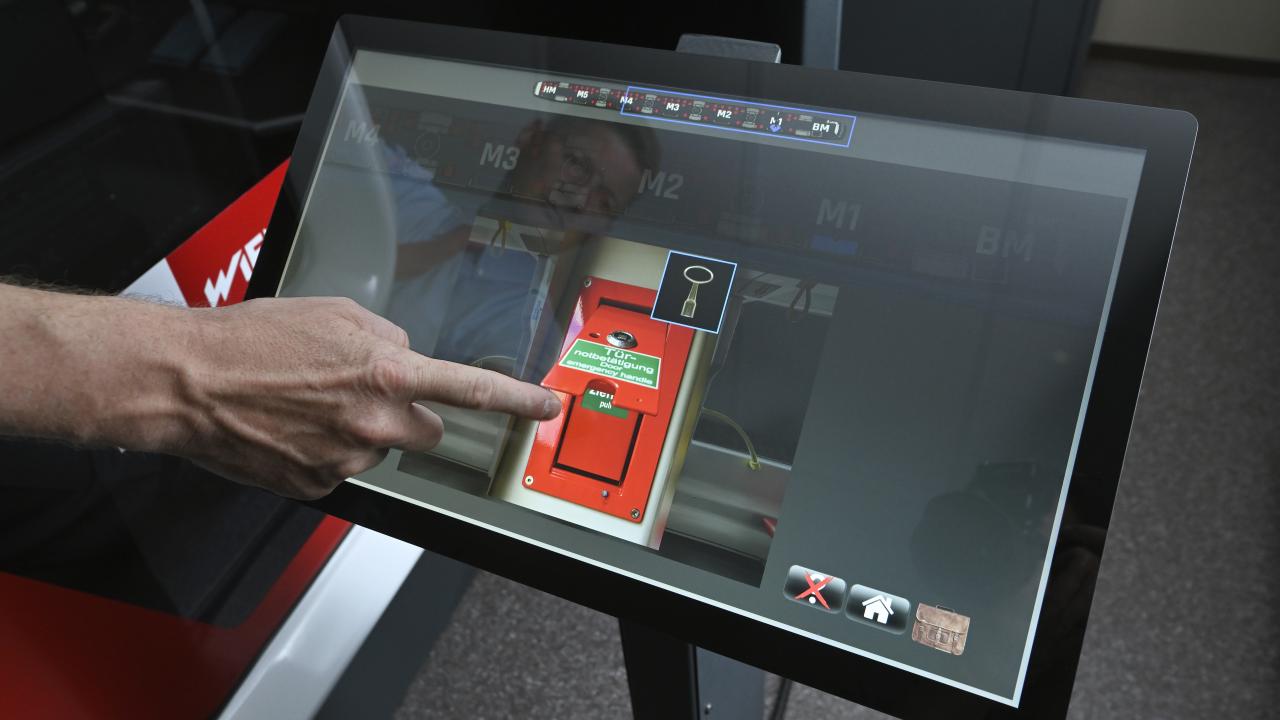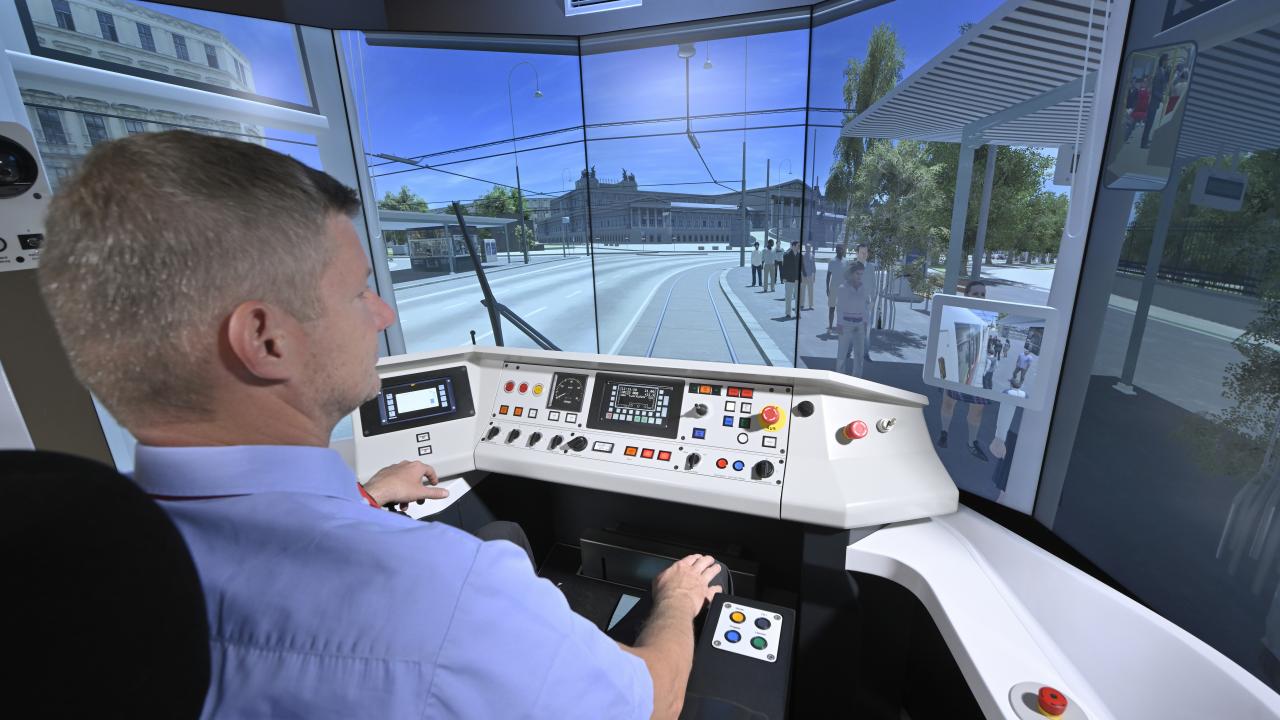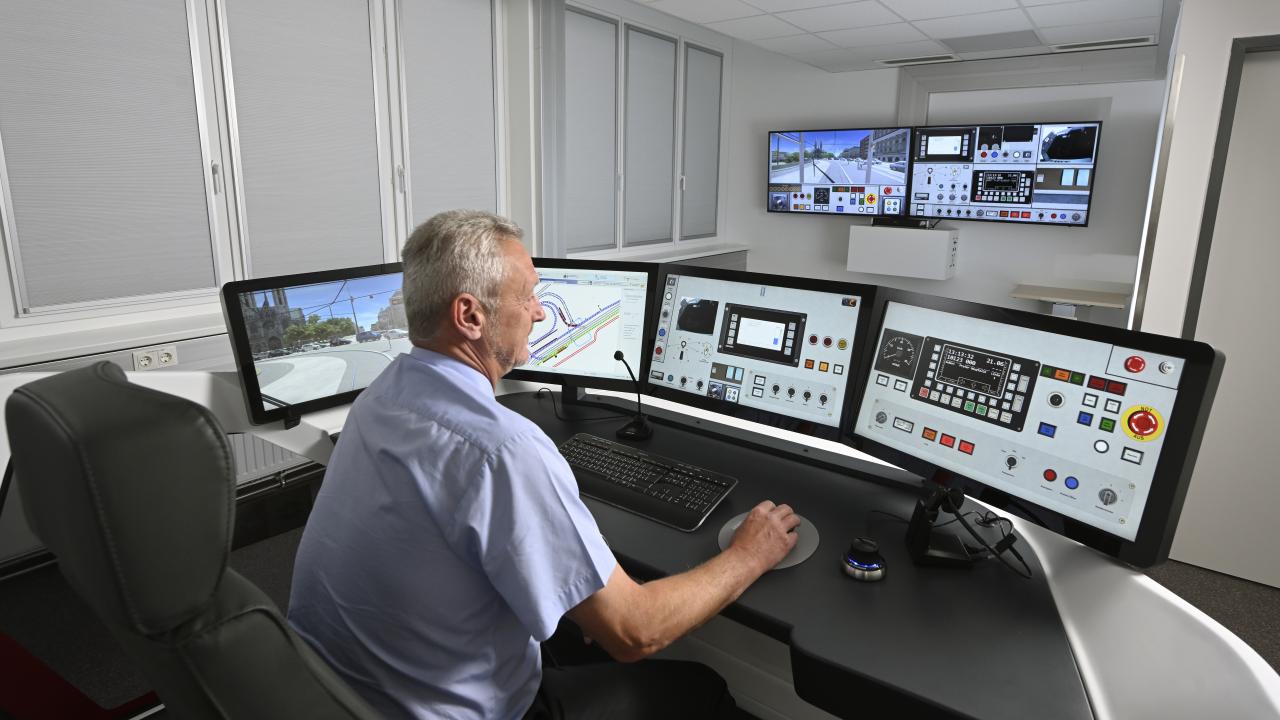Thursday, January 16, 2020
Wiener Linien öffnet neue Horizonte für die Simulation von Straßenbahnen
There are projects that, due to their size and nature, mean a qualitative leap for a company's products. Such projects usually go hand in hand with customers who know exactly what they want, who have extensive experience in their field and who want to create something with an innovative vision that goes beyond what is already known. This is the case with Wiener Linien, the city of Vienna's public transport company, which, since December, has had a completely new simulation system for its Siemens ULF tram vehicles and the new Bombardier Flexity, which are gradually being delivered to the Austrian capital.
The hardware of the simulation system also consists of two training stations with simulated driver consoles - one for Siemens vehicles (which was installed in December 2018) and another for Bombardier. These training stations are equipped with a new and impressive optical system with 5 vertically arranged screens, the frames of which are almost invisible. In addition, the individual screens can be adjusted by up to 3 degrees. This system was developed by LANDER according to the specifications of the project developed for RNV. The facilities were also equipped with three trainer stations and two observation stations, which are intended for trainees who do not use the simulator at the time.
But let's go back to the starting point of this message. The really remarkable thing about this project is not the hardware itself, but the unwaveringly clear vision that the entire Wiener Linien team had regarding the training tools that were to be used in the Simmering training center. This is reflected in software that includes countless small functions that give the tram simulator unprecedented reliability. These include a. the possibility to enter questionnaires for the trainees, to dynamically display optical information on the side distances of the trams to various objects in the area, to enter an infinite number of dangerous situations and incidents in the interest of training for the tram operation of Wiener Linien, integrate an eye tracking system and much more. All this is supplemented by the simulation of the historic center, the famous ring, this historic and exciting city of Vienna, which makes a majestic impression on the optical system requested by the Vienna transport company.
As we mentioned at the beginning, LANDER was able to set new horizons for its simulators and is now enjoying an excellent advertisement for future projects and for transport company interested in tram simulation. For this reason, we would like to express our thanks to Wiener Linien for the trust that our team has shown in us at all times and for its clear vision for excellent implementation.
We hope that our team will soon be able to repeat this experience in other cities around the world and of course continue to work with Wiener Linien for many years to come.
